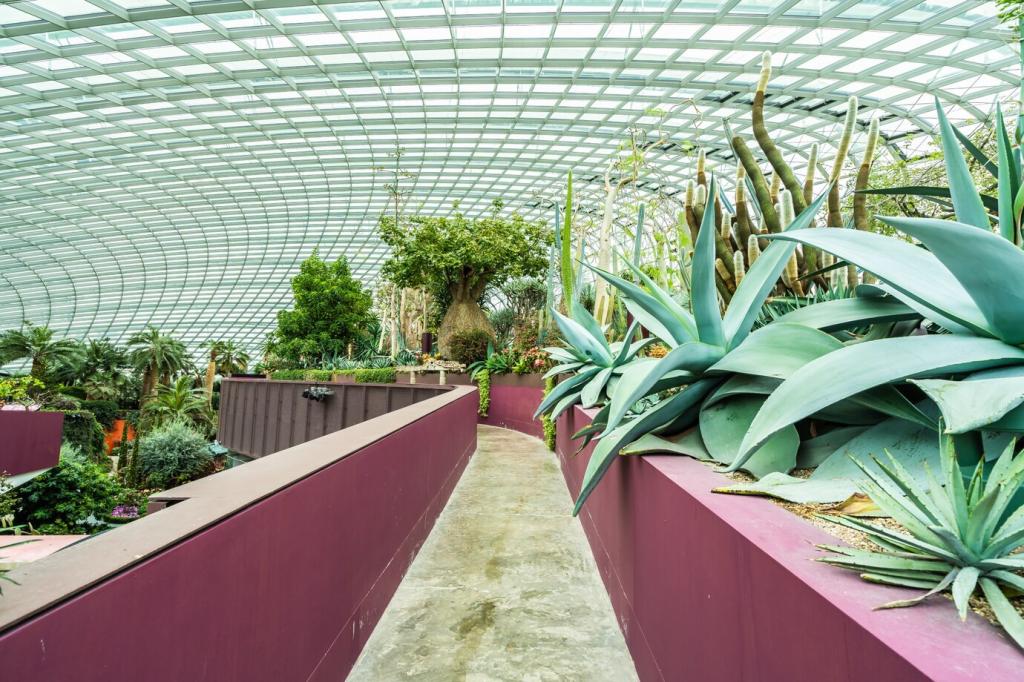Native plants play an essential part in shaping sustainable landscapes, benefiting ecological health and offering unique design opportunities. As awareness grows around environmental challenges and biodiversity loss, the focus on native species in landscape architecture has intensified. Integrating native flora not only enhances the visual appeal of outdoor spaces but also supports long-term sustainability. This approach respects natural ecosystems, encourages responsible stewardship, and promotes resilient landscapes capable of adapting to changing climates. The exploration of native plants demonstrates how thoughtful design harmonizes ecological responsibility with human needs, leading to landscapes that thrive well into the future.
Ecological Advantages of Native Plants
Enhancing Biodiversity
Native plants nurture biodiversity by providing critical habitats and food sources for local fauna, including pollinators like bees, butterflies, and birds. As these species have evolved alongside native vegetation, they rely on specific plants for nesting materials and sustenance. By designing with native flora, landscape architects position gardens and parks as vital corridors for wildlife movement and genetic diversity. In contrast to exotic species, natives foster balanced ecosystems in which each organism plays a distinct role. This natural synergy underpins stronger ecological networks, enabling communities of plants, animals, and microorganisms to flourish together in harmony.
Soil Health and Stability
Native plants are deeply intertwined with local soil ecosystems, often possessing root systems uniquely adapted to prevailing conditions. These roots help anchor soils, minimize erosion, and improve structure, facilitating aeration and water penetration. Over time, leaf litter from native plants contributes organic matter, enriching soil fertility and supporting beneficial microbes. Landscape architects who prioritize native species promote self-sustaining systems that reduce the need for chemical fertilizers and soil amendments. Healthy soils are the backbone of resilient landscapes, and the use of native species is a natural path toward lasting soil vitality and stability.
Improved Water Efficiency
Adapted to local rainfall patterns and climatic conditions, native plants typically require less supplemental irrigation once established. Their drought-tolerance supports water conservation goals, which are paramount in sustainable landscape architecture. Instead of relying on irrigation-intensive exotics, choosing native species allows for the creation of robust landscapes that thrive in sync with natural cycles. This not only lowers utility costs but also reduces the strain on regional water supplies. In areas prone to drought or water restrictions, native plants offer a dynamic route to sustainability, lessening environmental impacts and promoting collective responsibility for shared resources.
Native Plants and Landscape Resilience

Adapting to Local Conditions
One of the standout benefits of native plants is their adaptation to the unique microclimates and soil conditions of their home region. These plants have evolved over centuries or millennia to cope with local weather extremes, seasonal variations, and native pest populations. By using them in landscape architecture, designers craft environments that require minimal human intervention to remain vibrant through shifts in weather or temperature. This inherent adaptability allows for the creation of low-maintenance and robust landscapes that persist through the unpredictabilities of a changing climate, safeguarding both investment and ecological function.

Resistance to Pests and Diseases
Native species have natural genetic defenses built through relentless selection pressures from local pests and diseases. While no plant is completely immune, natives generally demonstrate greater resilience than introduced species, which may lack effective defenses outside their original environments. This means fewer pesticide applications are needed, reducing chemical runoff and creating safer habitats for humans and wildlife. By leveraging the natural resistance of native plants, landscape architects foster self-regulating ecosystems and contribute to the reduction of synthetic chemical use, thereby aligning their work with broader sustainability objectives.

Buffering Against Climate Change
The choice of native plants is a strategic decision in addressing the uncertainties of climate change. Their tolerance to local drought, flood, heat, or cold equips them to buffer landscapes from the intensifying effects of shifting weather patterns. Moreover, well-established native plantings can sequester carbon, assist in regulating local temperatures, and mitigate stormwater runoff. By assembling plant communities that reflect local geology and climatic history, landscape architects build resilience into public parks, gardens, and urban spaces. This approach not only preserves ecosystem services but also supports community well-being under changing global conditions.

Connecting Communities to Place
The use of native plants in public and private landscapes reinforces a community’s connection to its unique geographical context. These plants carry stories—ecological, historical, and cultural—that evoke a sense of belonging and continuity. Seeing native landscapes in everyday life nurtures environmental awareness, shaping collective identity and pride. Such connections encourage community members to engage with their surroundings, fostering appreciation for the region’s natural legacy. Through this lens, landscape architecture becomes a tool for social cohesion and place-making, helping people identify with and care for the landscapes they inhabit.

Education and Outreach Opportunities
Landscapes designed with native plants can become living laboratories for environmental education. Schools, parks, and community gardens can leverage these settings to teach visitors about local ecosystems, conservation, and sustainable design. Interpretive signage, guided walks, and citizen science initiatives further expand opportunities for public learning and involvement. By engaging people with the benefits and beauty of native flora, landscape architects help disseminate critical knowledge about plant conservation and ecosystem health. These educational opportunities cultivate environmental stewards who are empowered to support and advocate for sustainable practices in their communities.
